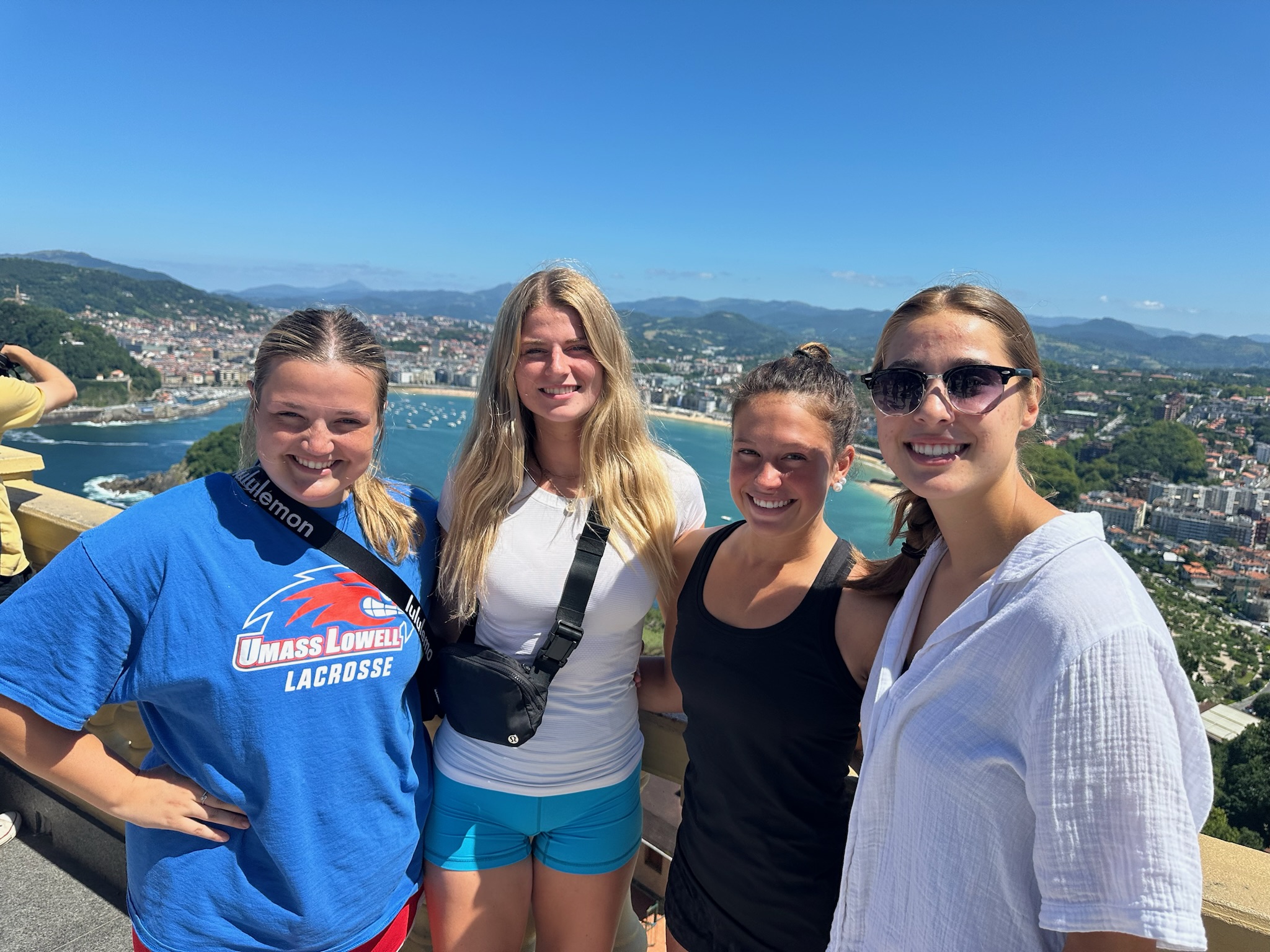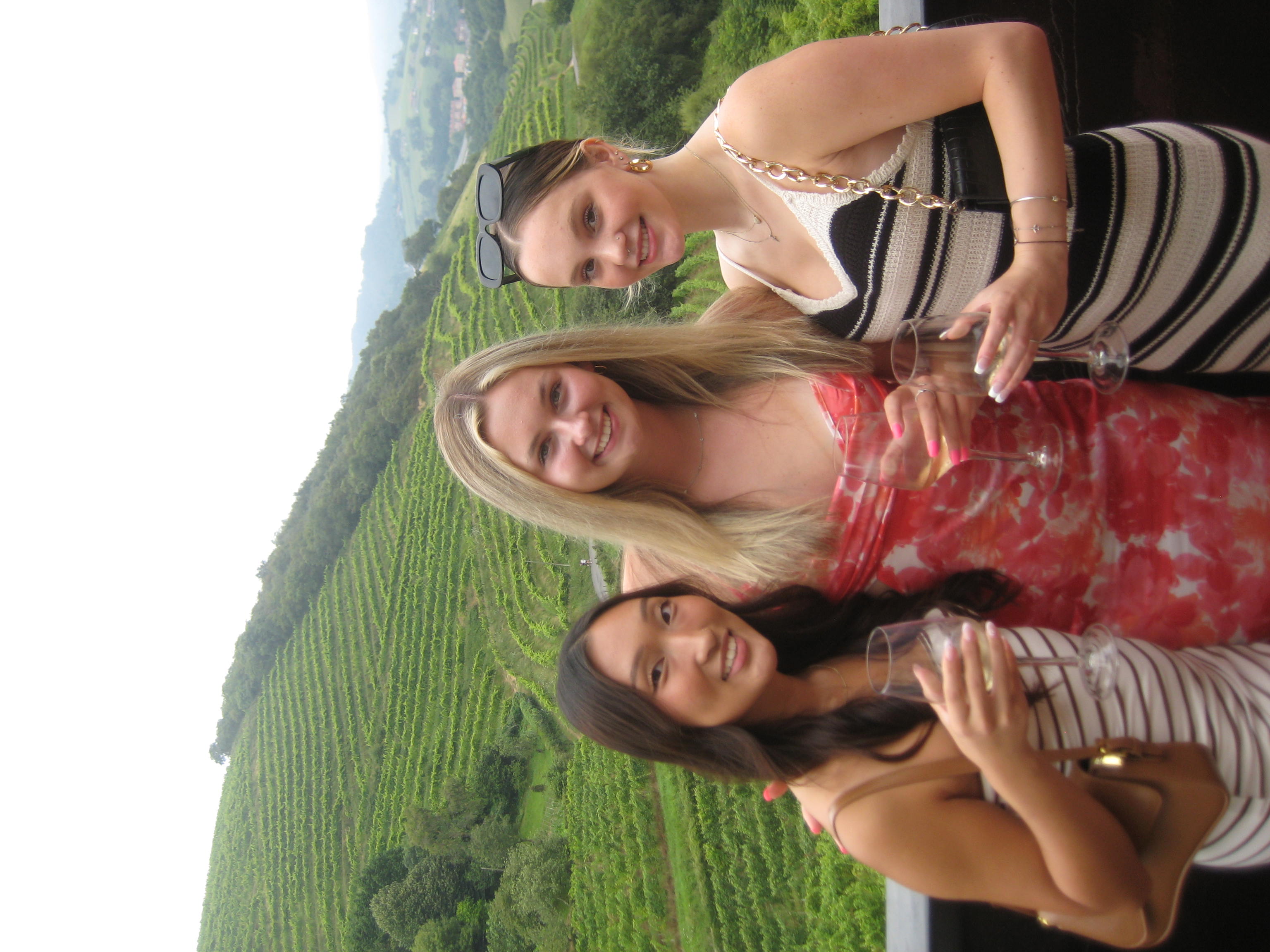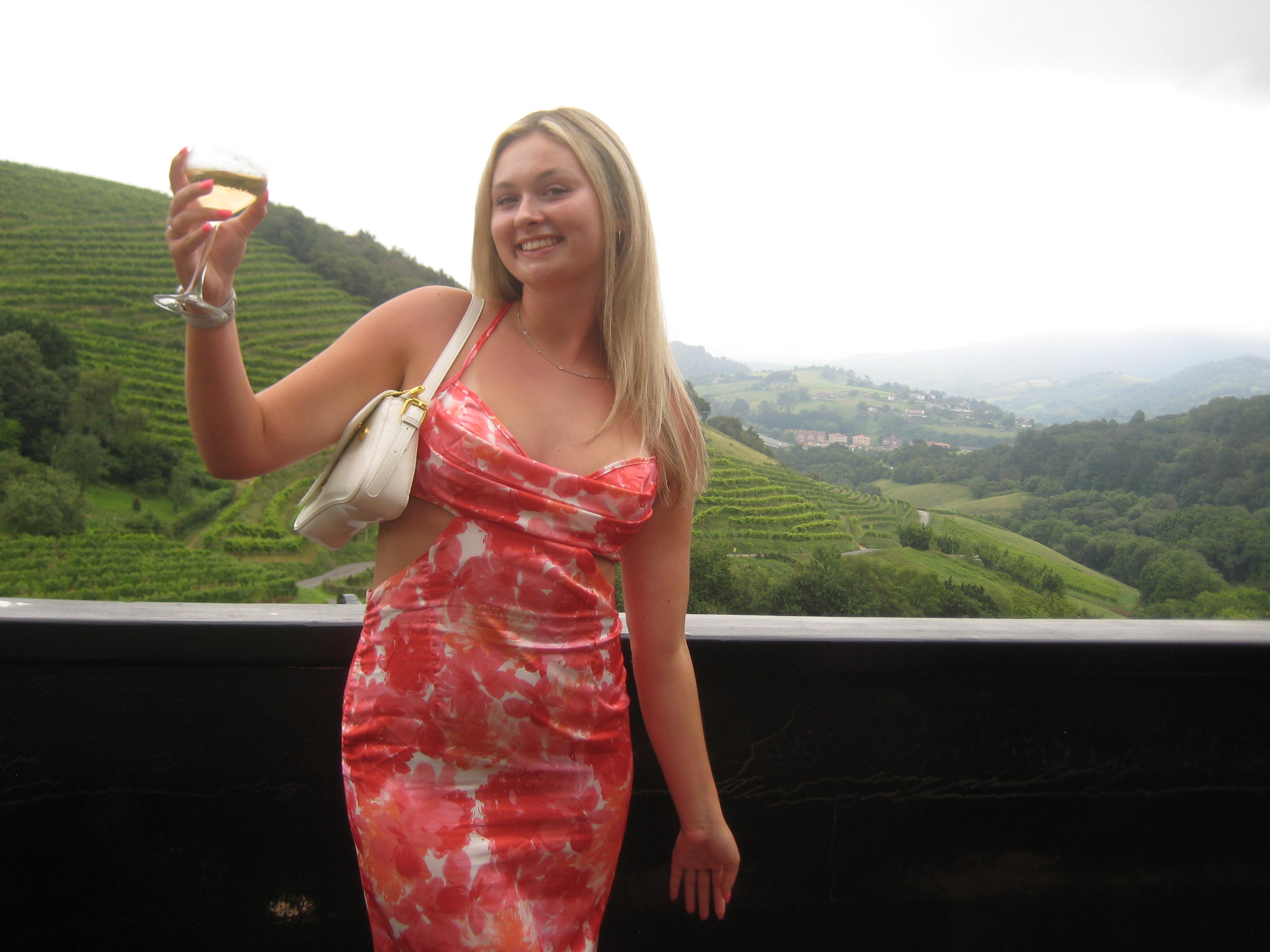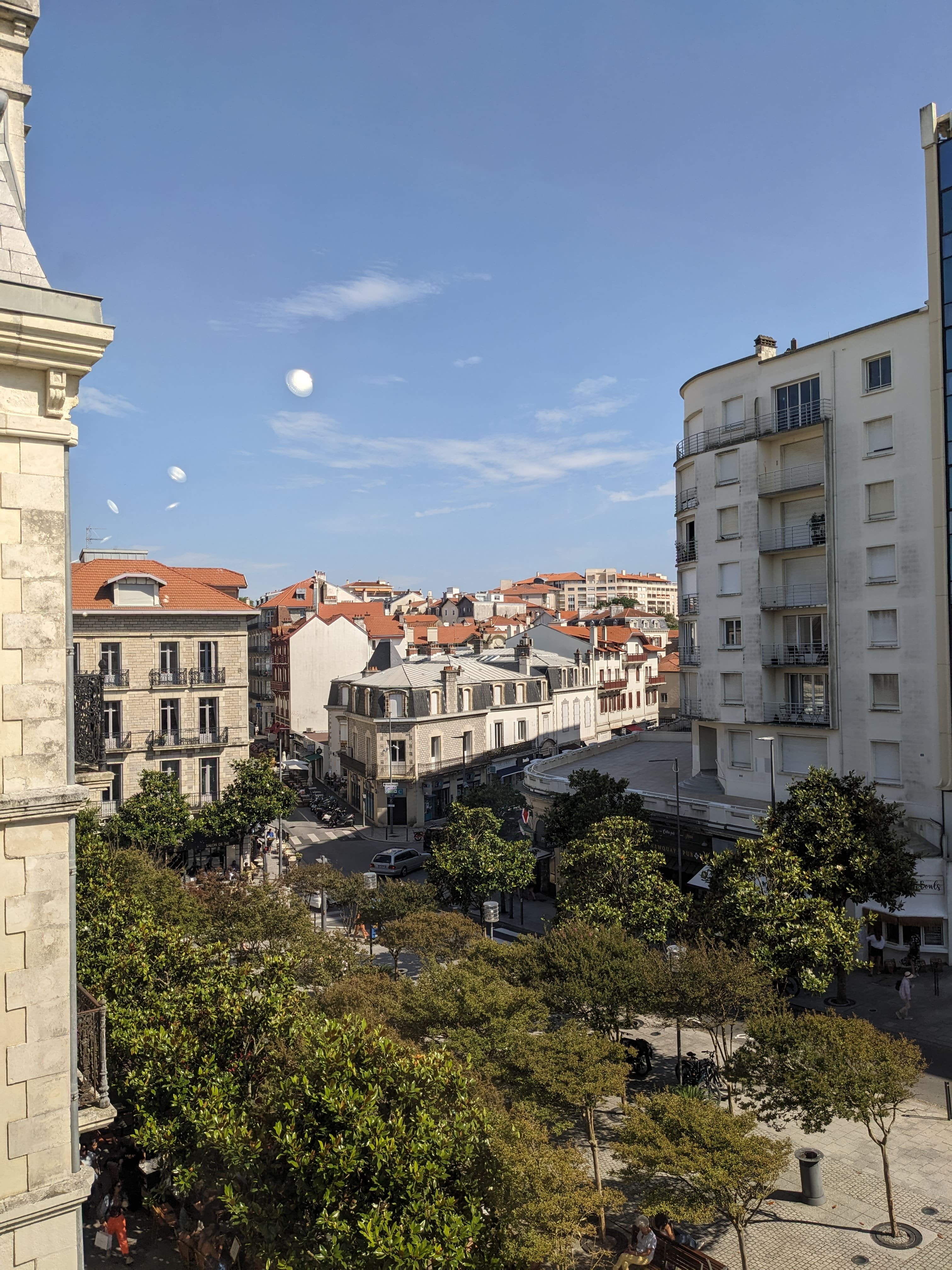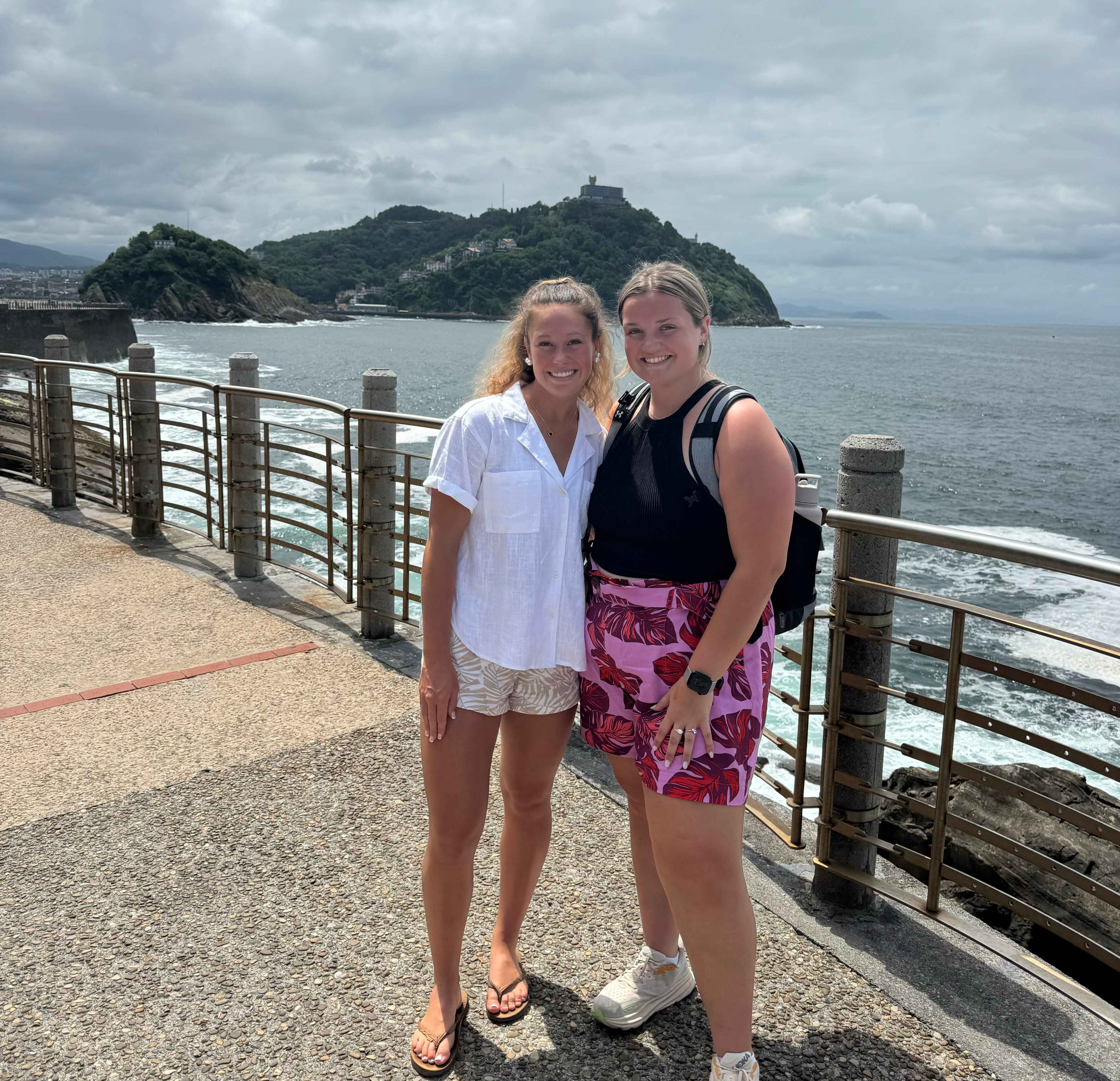Food is one of the main factors that define a culture. Within the Basque region, food is a way of life, a means for individuals—whether loved ones or complete strangers—to find unity, one bite at a time. During my pintxos tour, I encountered many daunting dishes; however, once I tried them, they offered flavors I didn’t even know humans were capable of experiencing. Some flavors were delightful, while others made me want to cleanse my palate with hot sauce. Each dish was truly a new adventure, and every restaurant we visited had its own unique atmosphere.
Before traveling to another country, I was an extremely picky eater. I avoided food that made me uncomfortable and rarely tried anything new. Before I left for Spain, I promised myself that I would set that hesitation aside and take a leap of faith with new foods. Sure, I might discover more flavors that I dislike, but there was always a chance I’d find a food I’d love for the rest of my life.
Salted cod is a very important product in San Sebastián. This preservation method dates back to the Basque fishermen of the 16th century, who salted and dried cod to preserve it for long voyages and harsh winters. Over time, salted cod became an essential part of Basque cuisine. The first meal I tried, truth be told, frightened me. It was a salted cod dish that resembled a croquette. It was creamy, salty, and very crispy on the outside. The flavor was powerful and perfect for a seafood lover, but the deal-breaker for me was the texture.
One of the most surprising dishes I tried was sea urchin soup. The idea of eating sea urchin was weird; I didn’t even know you could make a soup out of it. The flavor was so unique that it’s hard to describe. The only word that comes to mind is briny. The texture was very smooth and silky, similar to chowder or tomato soup. Although I wasn’t a fan of sea urchin soup, I have no regrets trying it.

Another odd dish, at least for me, was cow’s cheek. The meat was incredibly tender and covered in a rich sauce. I kinda liked it, though it wasn’t my favorite. It didn’t taste all that different from steak, besides being more tender.
The second restaurant we visited was very seafood-heavy. The menu consisted of various combinations of anchovy pintxos and fried calamari. I was a little sketched out by the look of anchovies, but I decided to try the one with fish eggs on top. To my surprise, I actually enjoyed it. It was very salty and paired nicely with the fish eggs and crispy bread. While seeing the fish scales threw me off, it didn’t affect the texture or flavor. The other meal there was the fried calamari, which was by far the best fried calamari I have had in my life. They were perfectly fried and seasoned, slightly chewy, and overall a great light snack.
On the way to the fourth restaurant, we stopped at a little shop that sells Jamon Iberico, a ham from the Spanish and Portuguese region. It is a cured ham cut directly off the leg in small, thin slices. Its flavor is unlike any other ham I have ever tried, though I didn’t particularly enjoy it. It has a salty-sweet flavor with fat that melts in your mouth.
For dessert, we had the famous Basque burnt cheesecake, something I had been looking forward to for the entire trip. Although I have never liked cheesecake, I had heard good things about it in the Basque region. I have to say, the cheesecake exceeded my expectations. It was the perfect texture, slightly puffy while still maintaining that classic cheesecake consistency. The outside was charred, giving it a smoky taste and a crispy texture that complemented the soft inside. The flavor was unreal, perfectly balanced—not too sweet, not bland. I know this is a food I will want to cook at home and share with my loved ones.
The message of this blog is more about risk than it is about food. I risked embarrassing myself by potentially throwing up in a restaurant or bar, but the reward was experiencing something new and enjoyable. This principle applies not only to food but also to new hobbies, trips you want to take, or the person you wish to ask on a date. The risk, if it turns out negative, is a finite consequence, but the reward is something that lasts a lifetime.

